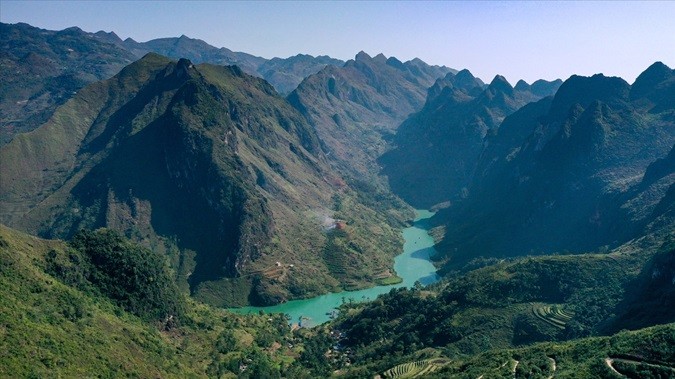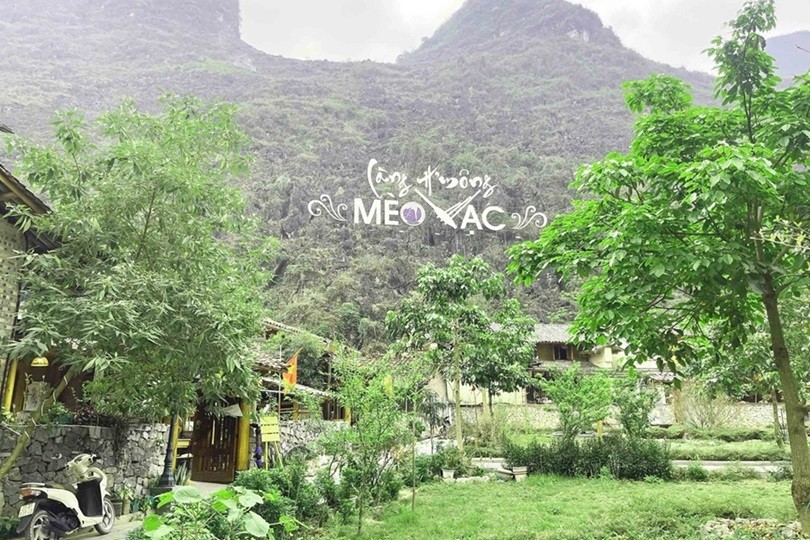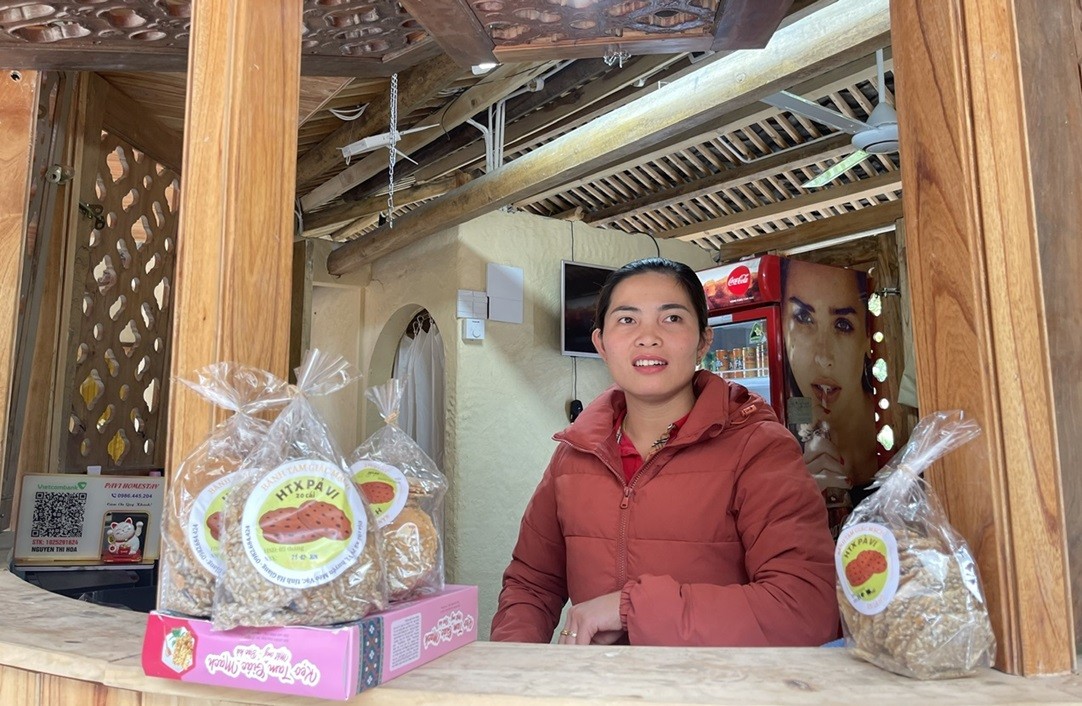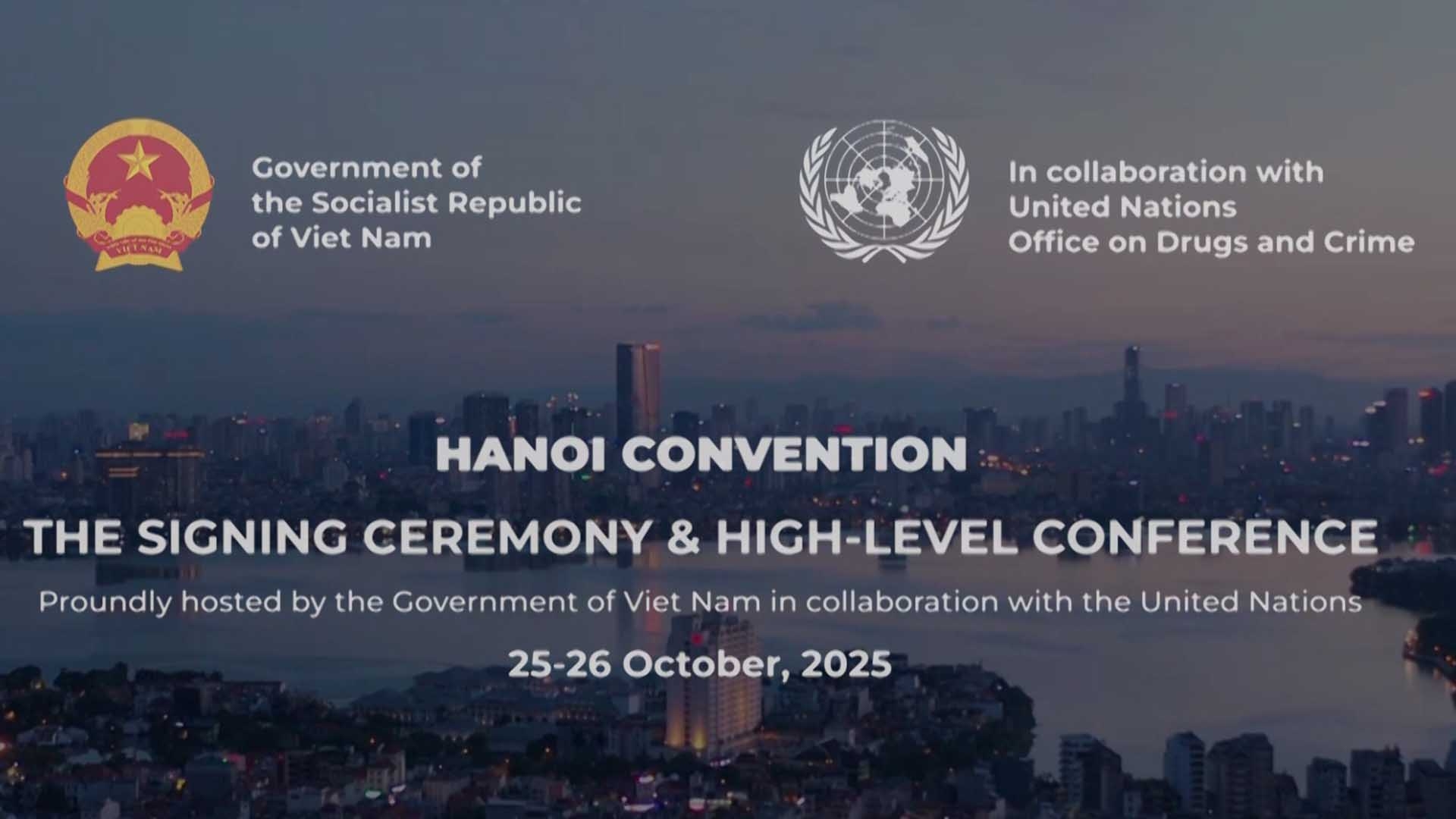
Community tourism 'put a new mantle' on Meo Vac border district
Latest
Although it is early March, Meo Vac district has welcomed a large number of tourists, both domestic and international, visiting famous tourist footfalls such as Ma Pi Leng Pass, Tu San Canyon, Nho Que River, Khau Vai Love Market, etc. During the first 3 months of the year, tourists coming to Deo Cao district of Ha Giang province increase by 180% over the same period.
These days, roads leading to ethnic cultural villages of Meo Vac district are frequently filled with large and small tourist convoys. Every weekend, tourists account for hundreds of travellers, many of whom have to book a long time in advance to get an accomodation.
 |
| Arieal view of a corner of Nho Que river (Meo Vac district, Ha Giang province). (Photo: Hong Chau) |
Attractive charm from the community tourism paradigm
Since the Politburo issued Resolution No. 08-NQ/TW on developing tourism to become a key economic sector, many localities, including Meo Vac district, have been probing and implementing the community tourism paradigm, to improve socio-economic life and create livelihoods for local peoples.
Currently, Meo Vac district has 5 community cultural tourism villages: the Hmong ethnic community cultural tourism village (Pa Vi Ha village, Pa Vi commune), the Lo Lo ethnic community cultural tourism village (Sang Pa A village, Meo Vac town), the Giay ethnic community cultural tourism village (Tat Nga village, Tat Nga commune), the Tay ethnic cultural tourism village (Niem Son commune), the Nung ethnic cultural tourism village (Khau Vai village, Khau Vai commune).
Located in equanimity at the foot of Ma Pi Leng Mountain Pass, Pa Vi Ha Community Cultural Tourism Village (Pa Vi commune, Meo Vac district) is like a brilliant colourful flower with poetic scenery at the farmost border of the Fatherland. Being a home to 26 ethnic Hmong households with an inherent space of cultural identity, since 2019, the village has officially been licensed to operate homestay services and deployed the business activities to welcome tourists.
Mr. Tho Mi Po – Village leader of Pa Vi Ha village said that before the community tourism paradigm was deployed, the Hmong people there had mainly grown corn and raised livestock, and been living in extreme difficulty, lacking of water and electricity for living and production.
 |
| Hmong ethnic community cultural tourism village (Pa Vi Ha village, Pa Vi commune). (Photo: Hong Chau) |
“Initially, when we were encouraging the local people to participate in implementing the community tourism village paradigm, the commune and village authorities encountered many obstacles because most of them were ethnic minorities and their understanding was confined within doubts. However, after a period of persistent persuasion for the people to see the benefits of the paradigm, many people have agreed to join hands with the government to turn the paradigm into reality." Mr. Po revealed.
Following her husband to live in Meo Vac 15 years ago, when realizing that the number of tourists coming to Ha Giang increased significantly, Ms. Hoang Thi Hien, the owner of Pa Vi Homestay, discussed with her family to participate in investing and running a homestay business in the Hmong ethnic community cultural tourism village (Pa Vi Ha village, Pa Vi commune).
Comtemplating over the large construction investment costs, the family was hesitant at first, but seeing the potential and prospects of this paradigm, Ms. Hien's family boldly borrowed money from the bank to develop it. After a few years running the homestay business, Ms. Hien's family's life has improved significantly, with monthly income reaching VND 30-40 million, many folds higher than the previous income from agricultural activities. Not only does it improve family life, Ms. Hien's homestay also contributes to creating jobs for young local workers. Currently, the homestay has 3-5 regular and seasonal workers, with monthly salary of VND 5-7 million.
“At early stage, the homestay business running was quite clumsy, from operating the facilities to providing services. However, with advice and suggestions from the district government and the people, we gradually improved to better ensure the needs of tourists. After 2 years of COVID-19, our homestay welcomed a fairly stable number of guests and it is increasing by year. On average, Pa Vi Homestay welcomes more than 20 visitors per day, especially with sharp increase on weekends. On holidays, if tourists do not book in advance, they could not have a room," Ms. Hien said.
 |
| Ms. Hoang Thi Hien, owner of Pa Vi Homestay at the Hmong Ethnic Community Cultural Tourism Village. (Photo: Hong Chau) |
Also according to Ms. Hien, since Meo Vac district has widely deployed the community tourism model, the homestay owners have regularly been facilitated by the commune and district authorities to participate in training courses on tourism and skills in housekeeping, reception, room preparation; through activities of study tours, to learn from community tourism sites in other provinces and cities such as Hoa Binh province, Son La province, and Moc Chau district.
Being aware of new digital technology and the popularity of social networks, especially through popular travel booking applications such as Agoda, Booking... many homestay owners in the village have easier access to international visitors, Especially, the young domestic tourists like to explore ethnic culture and highland scenery.
Ha Thu Thao (24 years old, from Hanoi) decided to choose the Hmong Ethnic Community Cultural Tourism Village instead of booking a room at a hotel in Meo Vac town because she wanted to experience the life of ethnic people.
“During my 3-day stay here, I had memorable moments when enjoying unique traditional dishes; participation in folk games such as shuttlecock throwing, seesaw, swinging; to immerse myself in the folk songs of the Hmong ethnic people," Thao excitedly told her stories.
Traditional cultural preservation in line with sustainable development
Talking to World &Vietnam, Mr. Ngo Manh Cuong, Vice Chairman of the People's Committee of Meo Vac district, Ha Giang province, said that Meo Vac district includes 18 communes and towns with 199 villages and residential groups, 17 ethnic groups living together, over 17,200 households, of which the Hmong ethnic community accounts for 78%. As one of four districts located in the Global Geopark, Dong Van Stone Plateau is recognized by the United Nations Educational, Scientific and Cultural Organization (UNESCO), Meo Vac district is determined to conserve and preserve the international recognition, its traditional culture as the community tourism development to be focussed on as one of the key tasks.
“After the COVID-19 pandemic was kept under control, in the two years 2022-2023, the number of tourists coming to Meo Vac increased dramatically, especially in the beginning of 2024. To date, Meo Vac has welcomed over 300,000 visitors, of which international visitors account for roughly 30%. Meo Vac is oriented towards tourism development with preserving and conserving the traditional culture, sustainable development, friendly landscape, and strict management so as not to disrupt the master planning," Mr. Cuong affirmed.
According to Mr. Ngo Manh Cuong, each cultural tourism village of each ethnic group has its own cultural identity; from costumes to the food dishes they all bear the unique specialities. The implementation of community tourism cultural village paradigm has brought about economic value, created jobs, increased income for the people, and helped to reduce hunger and poverty in Meo Vac district.
In the coming time, based on the success of the Hmong ethnic community cultural tourism village model in Pa Vi commune, the district will promote the construction of a genuine Lo Lo community cultural tourism village in Sang Pa A village, Meo Vac town to attract more tourists.
 |
| Mr. Ngo Manh Cuong, Vice Chairman of Meo Vac District People's Committee, talks to the press. (Photo: Giang Huong) |
“The Lo Lo people have very unique identities that are not found anywhere else. In addition to beautiful costumes, the Lo Lo people also work hard, jire and dance wery well... They do everything well. The Lo Lo people are one of 16 ethnic groups with a population of less than 10,000 people and need to be preserved. When planning to build a cultural village of the Lo Lo people, we will also pay great attention to expressing their cultural identity. Such planning allows the better infrastructure, they can welcome many guests at the same time and the vehicles can move easily," The Vice Chairman of Meo Vac District People's Committee emphasized.
Besides preserving and promoting traditional values, to increase the attraction and prestige of Meo Vac tourism in particular and of Ha Giang province in general, the district authority also comprehends that coming to Meo Vac means coming to green tourism, friendly tourism, and it would restrict and strictly handle cases of extortionate pricing that cause offense to visitors and tourists.
“We cooperate with the police force and district and commune People's Committees to regularly inspect, remind and advice the restaurant owners and accommodation establishments’ oweners who show signs of extortionate pricing and price increases, especially during holidays. Our common goal is to create the best impression for tourists when they come to Meo Vac, Ha Giang", Mr. Cuong revealed.
Although there are still many difficulties, with the determination and unanimity of the government and people in developing and replicating the community tourism paradigm, in the coming time, Meo Vac district hopes to wear more "new mantles" to become a footfall address for tourism not only in Ha Giang province but also across the country.

















